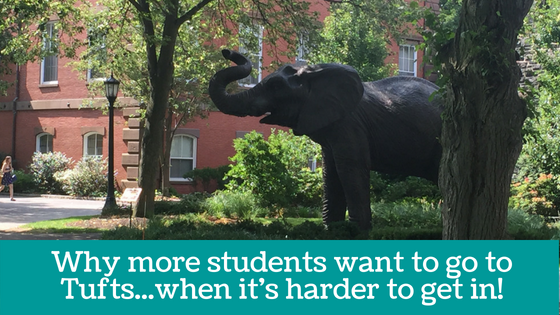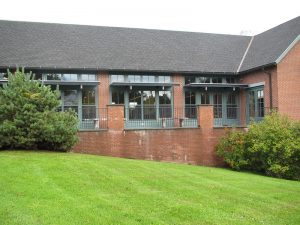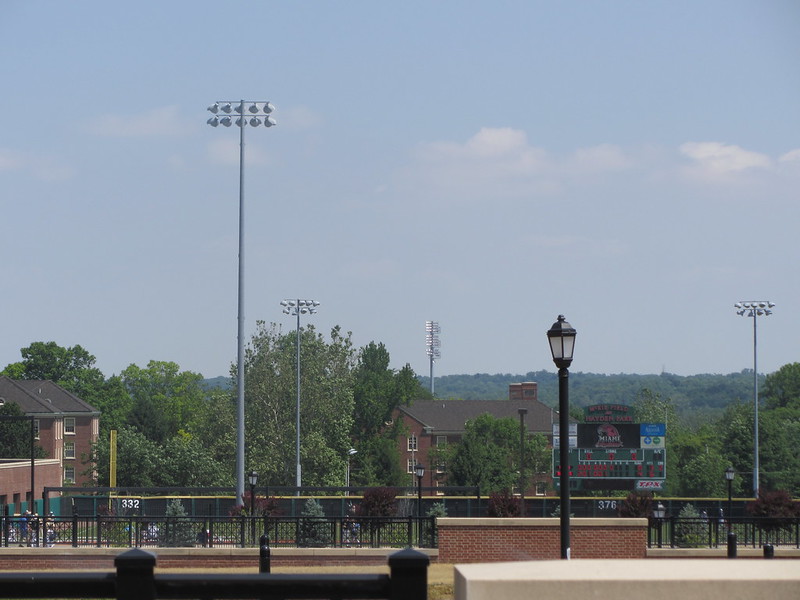With its small size and dramatic increase in applications, Tufts has become one of the more selective colleges in the country. Tufts attracts students through their three major focuses – global, research, and undergraduate.
Tufts is among the top 10 research universities for the percentage of undergraduate students who study abroad (42 percent!). No wonder given that students at Tufts can choose from 170+ semester and year-abroad programs and a full-immersion program in 9 countries around the world. Additionally, Tufts is among the top universities with graduates entering the Peace Corps.
The Carnegie Foundation ranks Tufts as an institution with “very high research activity,” its highest classification. There are a wealth of opportunities for undergraduate students to join faculty, graduate students, and postdoctoral researchers on research across all disciplines. About 67% of classes have fewer than 20 students, and are taught by professors who are praised for being “knowledgeable, engaging, and caring.”
Academics at Tufts
Tufts students have the freedom to take classes across the 3 different schools – School of Arts and Sciences, School of Engineering and School of the Museum of Fine Arts. Course requirements are distributed across disciplines and include a World Civilization course in addition to art, English, foreign language, social sciences, humanities, natural sciences, and math for liberal arts students. Engineers must take six courses in the arts, humanities, and social sciences, with one of those fulfilling a writing requirement.
Tufts offers a popular and unique program that allow students to develop and teach courses (which may, in part, offset the fact that the education majors are only offered at the graduate level). One is the Experimental College (affectionately known as “ExCollege”), which offers more than 100 nontraditional, full-credit courses taught by students, faculty, and outside professionals in the Boston area. The interdisciplinary approach of ExCollege promotes student-faculty collaboration, opportunities to teach, explore and incubate new ideas. A sampling of courses include: American Witches; Baseball Analytics; Self-driving Cars and Podcasting.
Additional quick facts about Tufts
Freshman acceptance rate: 14%
Freshman retention: 96%
Freshmen out of state: 80%
4-year Graduation rate: 87%
Most popular majors: computer science, international relations, biology
Social scene at Tufts
Tufts has a host of social activities on campus organized by student groups and the university. Artistic programs include concerts, free movies, a cappella groups, and plays. The largest campus-wide group, with more than 1,000 students participating each year, is the Leonard Carmichael Society, which oversees community service initiatives for 40 groups, with projects that include support for adult literacy, blood donations, domestic violence victims. Less than 20% of guys or women at Tufts participate in Greek life. The university organizes Halloween on the Hill, a carnival for children in the community, and Spring Fling, an outdoor concert before final exams. Though Tufts is located in the suburb of Medford, the nearby “T” metro system allows students to take an easy trip to Boston for work or play.
Tufts’ Jumbos compete in the New England Small College Athletic Conference, with their softball, men’s lacrosse, and men’s soccer recently capturing national titles.
Housing
Freshmen through seniors may choose from 40 residences ranging from traditional dorms and shared apartments to small special interest houses, which give students a chance to live with others who share their cultural or academic interests. Freshmen and sophomores must live on campus in the dorms, while upperclassmen compete in a lottery or move to affordable apartments near campus. (A fun fact that I heard during my campus tour was that the freshman roommate matching survey focuses on music!) Those students who reside in residence halls organize discussion and study groups and may bring in guest speakers for special events.
Similar colleges to consider:
Boston University, Brown, Cornell University, Georgetown, NYU, Northwestern, University of Pennsylvania, Washington University in St. Louis
Financial aid and Scholarships
Tufts offers need-based aid only, i.e. they do not offer merit or academic scholarships. 100% of need is met. Although the tuition and fees are $69,000 a year, the average financial aid package is $43,000, with 41% receiving need-based scholarships or grants.
What do you think about Tufts University? What about this college is a good fit? Please post your comments below.










